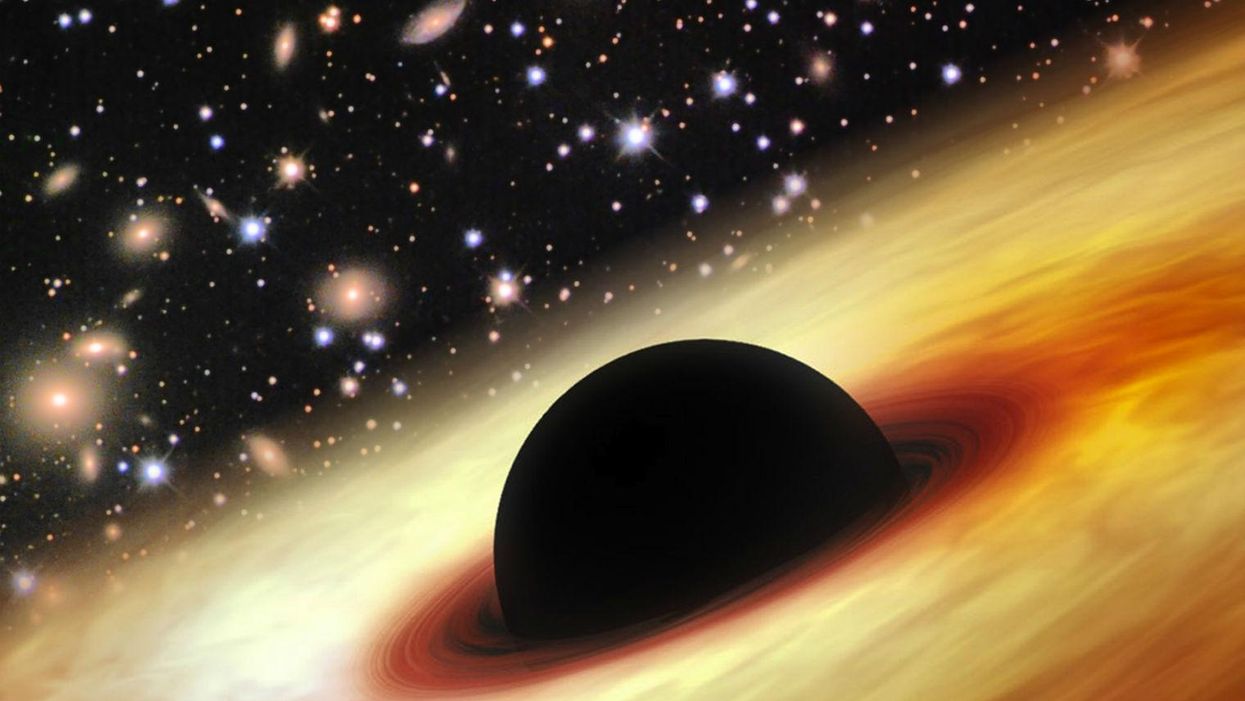News
Evan Bartlett
Feb 26, 2015

An artist's impression of a super-massive black hole at the centre of a distant quasar
PA
Astronomers have just discovered a super-massive black hole weighing as much as 12 billion suns.
Thankfully, it's in a galaxy far, far away (12.8bn light years from Earth, to be precise). More worryingly, however, is the fact that it's not even the biggest one ever found. But its formation has puzzled astronomers.
According to National Geographic, the black hole grew to its mammoth size 875 million years after the big bang, when the universe was just six per cent of its current age. A rate of growth unknown before.
The international team of researchers, who published their findings in Nature this week, couldn't see the black hole itself - because no light can escape it - but instead spotted a giant ball of energy, known as a quasar, that heats up the closer it gets to the vacuum using telescopes across the world.
This quasar is very unique. We are so excited, when we found that there is such a luminous and massive quasar only 0.9bn years after the Big Bang. Just like the brightest lighthouse in the distant universe, its glowing light will help us to probe more about the early universe.
- Professor Xue-Bing Wu, Peking University
This quasar, which has a million billion times the sun’s energy output, is "the biggest monster we've ever detected in terms of luminosity," according to Avi Loeb, chair of the Harvard astronomy department, but not involved in the research.
The quasar's brightness tells astronomers how powerfully its gas is being heated and therefore how large the nearby black hole is.
This black hole's super size doesn't appear to fit in with existing theories of black hole formation, but there are some alternative hypotheses.
This quasar is a unique laboratory to study the way that a quasar’s black hole and host galaxy co-evolve. Our findings indicate that in the early universe, quasar black holes probably grew faster than their host galaxies, although more research is needed to confirm this idea.
- Dr Yuri Beletsky, Carnegie Institution
Astronomers think that either two black holes may have merged together, or that the first stars in the universe were a lot bigger than previously thought and fed the black holes to an even bigger size.
More: Nobody panic, but astronomers just found a 'super massive' black hole
Top 100
The Conversation (0)













